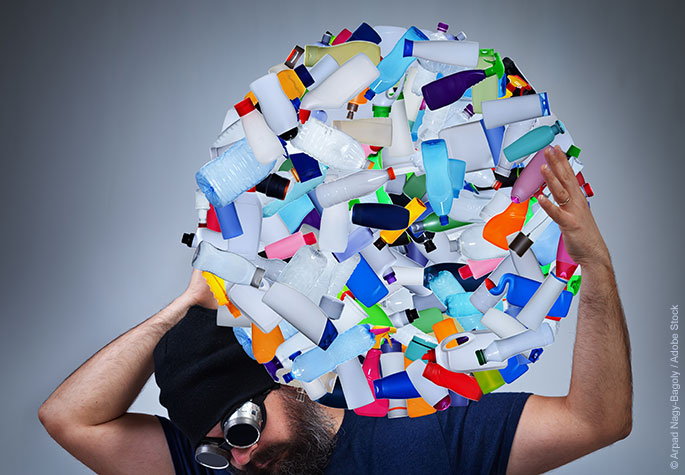
Each year humans produce around 300 Million tons of plastic, compared to 1.5 Million tons in 1950. Plastic pollution has infiltrated every corner of the Earth. The environmental consequences are dire, particularly in marine ecosystems where plastic particles are eaten by all types of animals and become part of the food chain. A study published in the Proceedings of the National Academy of Sciences of the United StateS of America (Wilcox et al. 2015) estimated that by 2050, 99 percent of all sea birds will have ingested plastic pollution. The marine plastic problem is so serious that earlier this year, the United Nations (UN) declared an official war on ocean plastic.
The ugly truth is, much of this pollution starts in our own home. Our lives are saturated with plastic, and it is not just the obvious sources that are to blame. Below are five sources of household plastic which might surprise you:
- Cosmetics – many cosmetic products such as facial scrubs and exfoliation products contain plastic micro-beads
- Cushions and sofa material – some cushions contain polyurethane foam
- Electrical circuit boards – circuit boards hidden within most electrical products contain laminated epoxy plastic
- Tablecloths – table covers and other cloth-like materials may contain polyvinyl chloride (PVC)
- Flooring – often, flooring made to look like wood or other natural materials is a thin sheet of PVC.
Not all plastics can be thrown in the same recycling bin or be recycled in the same way. Countries, states, and cities have different waste management approaches and options. The more we know about our options, the more we can help tackle the plastic pollution problem. If it is significant enough to warrant the strong UN response earlier this year, then we should be taking it seriously in our own homes.
Article source: Wilcox.C, Sebille.E and Hardesty.B (2015) Proceedings of the National Academy of Sciences of the United State of America (Vol. 112, No. 38). Accessed 20/11/2017.




































































































































 Three Ways to Engage Teams and Clients to Maximize Your Recycling Program Engagement
Three Ways to Engage Teams and Clients to Maximize Your Recycling Program Engagement  How to Integrate Accessibility Into Your Sustainability Planning
How to Integrate Accessibility Into Your Sustainability Planning  Why Park Benches Can Promote Workplace Well-Being
Why Park Benches Can Promote Workplace Well-Being 
